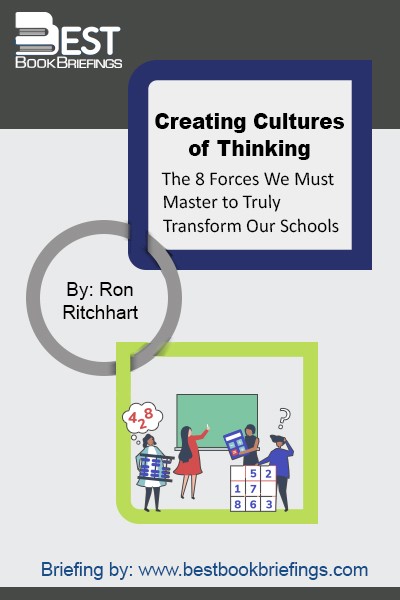Creating Cultures of Thinking
The 8 Forces We Must Master to Truly Transform Our Schools
Editorial Review
When and where have you been a part of a culture of thinking? That is, when have you been in a place where the group’s collective thinking as well as each individual’s thinking was valued, visible, and actively promoted as part of the regular day-to-day experience of all group members? Over the years, we’ve asked thousands of people to reflect on the cultures of thinking they have experienced. The qualities that each of these constituencies identify as being effective “shapers” of cultures of thinking are surprisingly similar. In this book, Ron Ritchhart relates the fine-scale details of what happens in classrooms to the high-level goals of education.
Book Reviews
Books on Related Topics

From seating plans to Shakespeare, Teaching Outside the Box offers practical strategies that will help both new teachers and seasoned veterans create dynamic classroom environments where students enjoy learning and teachers enjoy teaching. This indispensable book is filled with no-nonsense advice, checklists, and handouts as well as a step-by-step plan to

Learning is the process of acquiring new knowledge and skills. Education means organized programs of learning. Training is a type of education that’s focused on learning specific skills. By schools, we don’t mean only the conventional facilities that we are used to for children and teenagers. We mean any community of

Read and learn as James O'Hanlon and Donald Clifton describe how elementary and secondary principals, identified as outstanding, carry out their work. According to the authors, these principals resemble highly effective managers in business in their adherence to the tenets of positive psychology. While the position of principal is highly demanding,

It is no longer enough that we educate only to the standards of the traditional literacies. If students are to survive, let alone thrive, in the 21st-century culture of technology-driven automation, abundance, and access to global labor markets, then independent thinking and its corollary, creative thinking, hold the highest currency. To

Back in the old days, one could only dream to live a better life than that of his or her parents. But today, there’s no limit to what one can do. When our basic needs from food, shelter and security are met, we start to dream bigger. Not only do we

Everybody Writes Your Go-To Guide to Creating Ridiculously Good Content Author: Ann Handley Content is everywhere, from TV, the internet, and billboards. However, writing high-quality content is a whole different story. This book summary of Everybody Writes will teach you how to craft content and integrate writing as a daily habit. Why can everybody



